In this age of Instagram and AI, you can’t always believe what you see. If you’ve ever come across photos of the Isle of Harris, in Scotland’s Outer Hebrides, you’ll know that it looks unbelievably amazing. Tropical turquoise waters and shimmering white sands to rival those of Caribbean.
The mountainous interior is said to be wild and rugged with dramatic ocean views to other Hebridean islands. It seems like a hiker’s dream destination, an experience of a lifetime, with incredible scenery and wildlife – without even having to leave the British Isles. Could it be too good to be true?
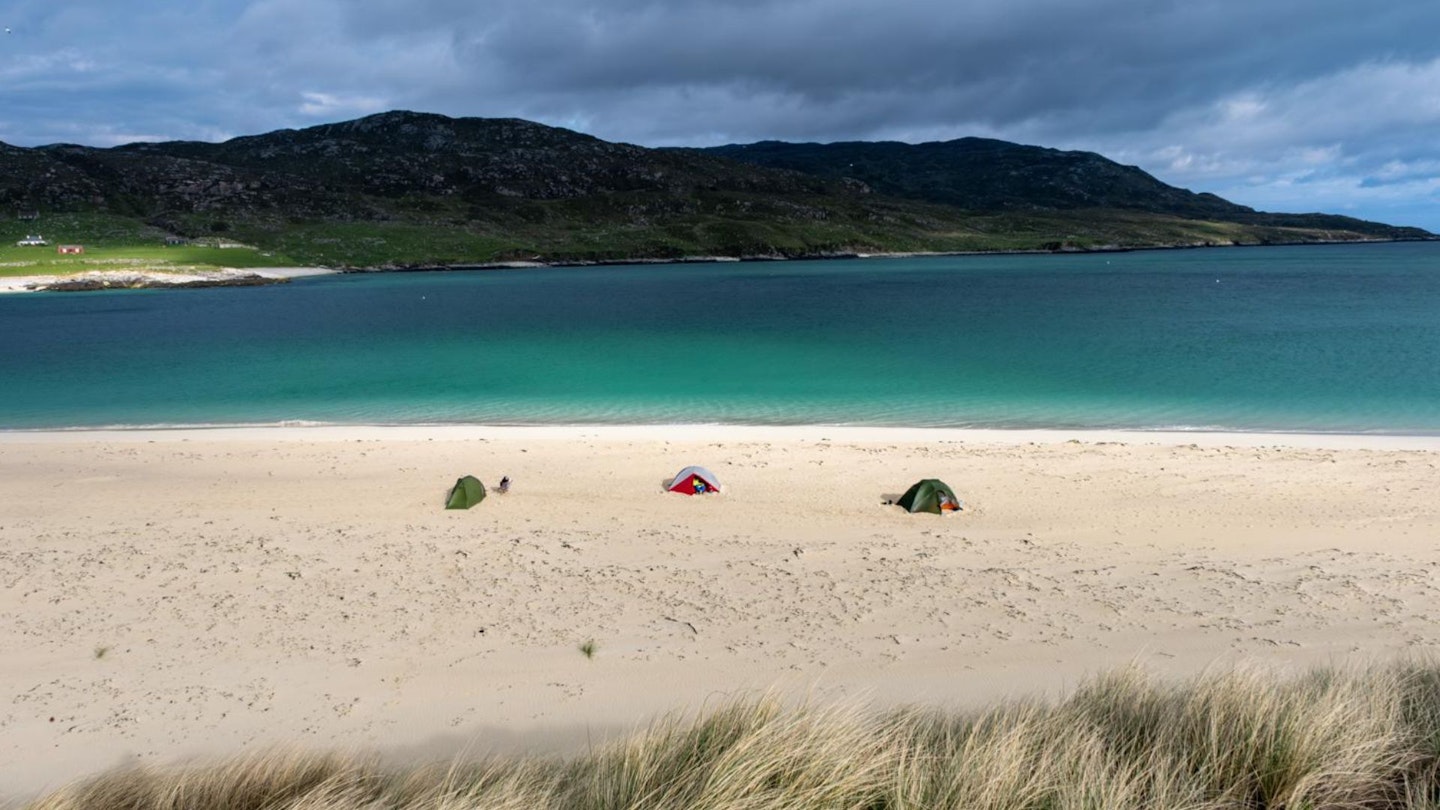
I’d dreamed of seeing this magical place for decades. Then finally, in May this year, I set off with buddies Ben and Lou to embark on the 550-mile drive and ferry crossing, from Cambridgeshire to Harris, for the first time. It was a proper road trip through some of the most spectacular parts of the UK – from the Pennines, the Lake District, Glen Coe, and Glen Shiel to, finally, our first overnight stop, about 12 hours later, on the Isle of Skye.
Skye was the perfect pitstop for our limited timeframe. With a ferry crossing to Harris from Uig at the far north-western tip of Skye at 2pm the next day, we planned to stay at Staffin Campsite, and spend the morning before our ferry exploring the magnificent Quiraing, which was handily located just a 15-minute car journey away from the ferry port.
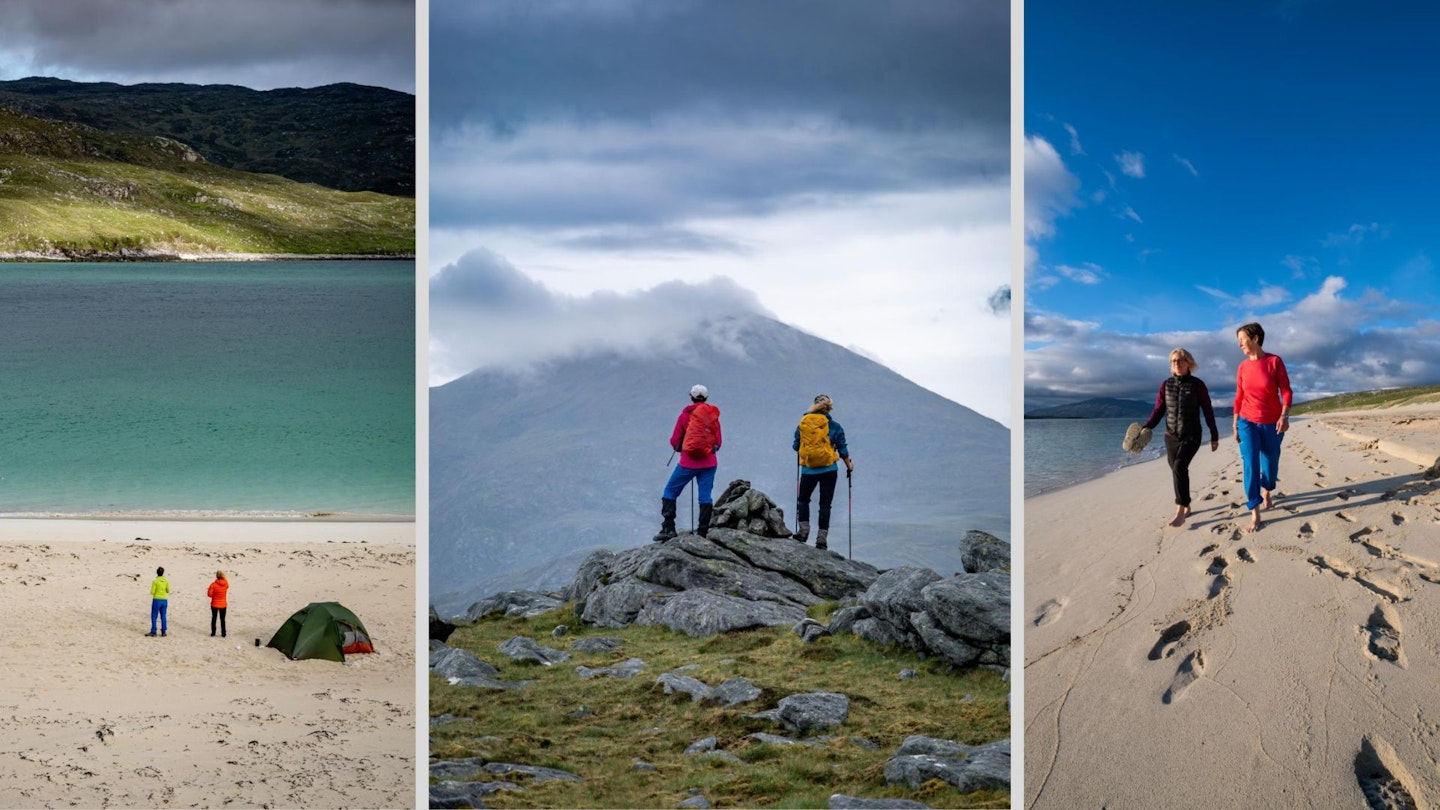
The Quiraing is part of the enormous landslip that forms the northernmost part of the Trotternish Ridge. There’s the main car park trail for a quick look, or a less touristy option from Flodigarry – either way the cliffs and crazy rock formations make you feel as if you’re on a set for The Lord of the Rings. It was a good leg stretch after our mammoth journey before we jumped on the car ferry to Tarbert, on the Isle of Harris.
“THIS WAS A SPECIAL PLACE. THE WHITE SANDS ROLLED INTO HILLS MADE OF ROCK PRE-DATING EVEN LIFE ON EARTH”
The ferry crossing from Uig to Harris was just 1hr 40min and we arrived on this remote Atlantic archipelago, on the very fringes of our lands, with nothing but ocean for 3000km due west. The plan was to wild camp near one of those picture-perfect beaches, and after a 40-minute drive and an hour’s walking, I found myself slap-bang in that Instagram picture. No filters, no fakery, no exaggeration.
That luminous white sand was squishing through my toes. The sun was warming the breeze on my face. A crescent-shaped beach cradled freezing cold blue waters. Before I knew it, Ben was stripped off and in the sea.
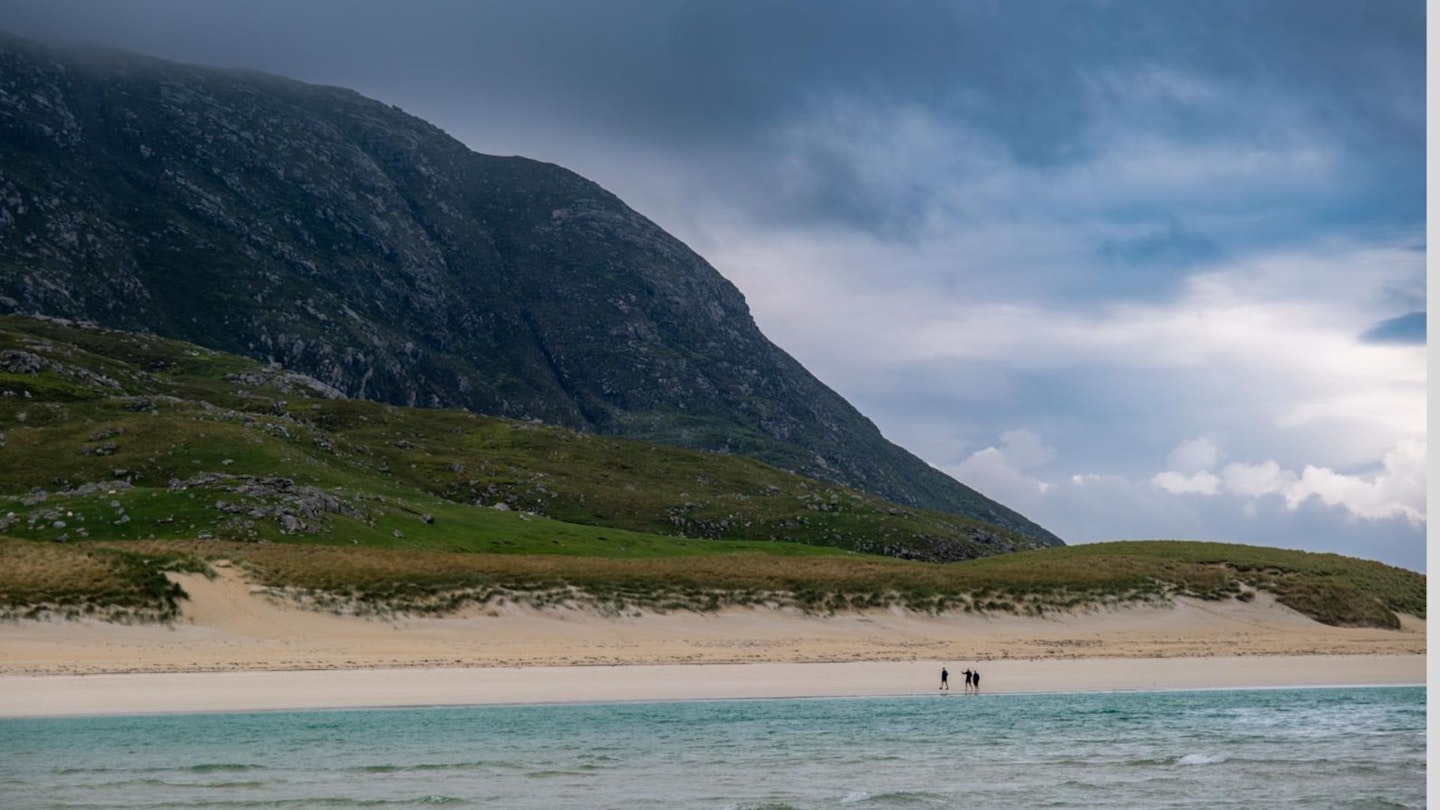
This was a special place. The white sands rolled into hills made of Lewisian Gneiss, one of the oldest rock types in Europe, pre-dating even life on Earth three billion years ago. Boulders on the beach were rippled and crimped with layers of colour and pattern embedded in the gneiss. The rocks of South Harris are especially known for containing anorthosite, which is similar in composition to rocks found in the mountains of the moon.
It wasn’t long before a sea eagle soared overhead, its fingered wings stretching out an enormous 2.5m span. Also known as the white-tailed eagle, the sea eagle was hunted to extinction in Scotland in the early 1900s, until a reintroduction programme on Rum in 1975 saw its return to the Outer Hebrides. Little gaggles of wading birds jostled and waddled around in the shallows, like a bunch of chattering school kids.
Gannets and terns dive-bombed shoals of fish, while Skuas – known as the pirates of the seas – worked in pairs to steal the fish from the others, with one bird aggressively attacking and the other catching the dropped prey. It was mesmerising and, incredibly, we had this natural paradise all to ourselves.
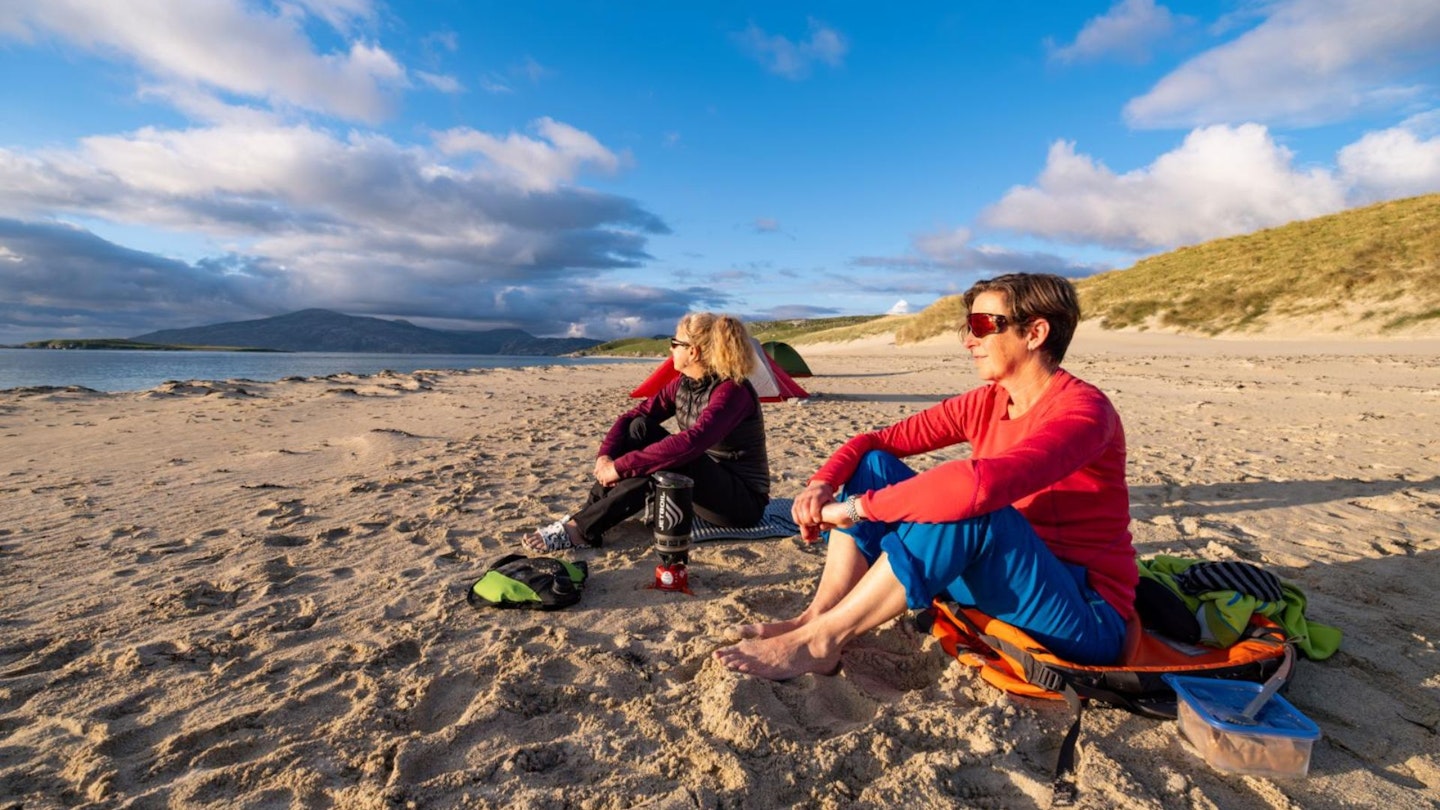
It seemed almost sacrilege to put up our synthetic tents in this pristine landscape. For once it felt like it belonged to the wildlife, unspoilt by humans. But Harris has the same wild camping rules as the rest of Scotland, and so with great respect and gratitude we pitched our tents for the night and watched the magic unfold as the sun began to set over the sea.
As we sat with the sun sinking into the horizon, something else broke the surface of the sea from below, catching our attention. Dolphins! At least five of them performed an evening entertainment against a sunset that turned the sky red and the sand pink, and lasted until almost midnight. That evening was one I will never forget. A package of perfectness that made me wish I was bivvying, so I didn’t have to risk missing a single moment of it behind my tent zip.
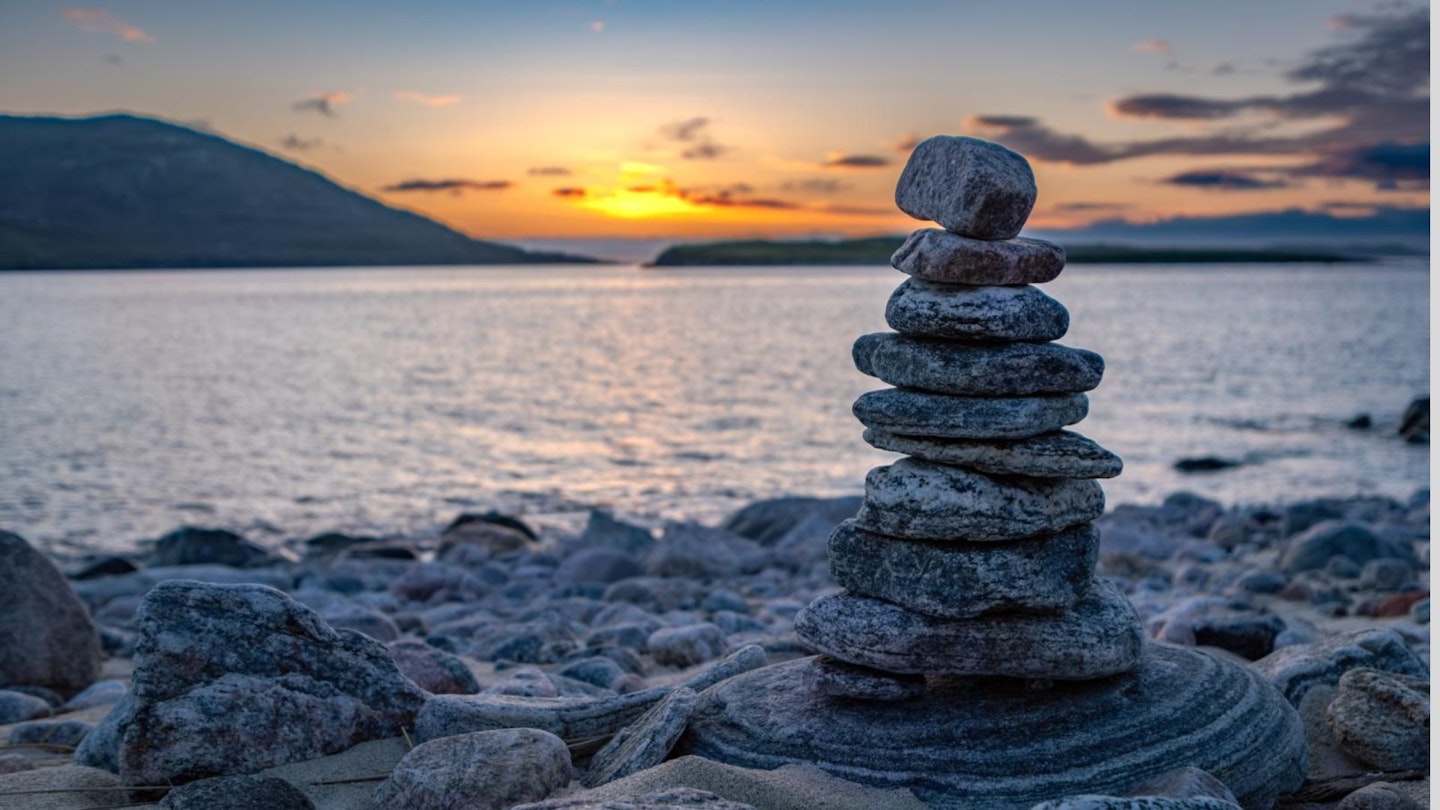
The next morning, however, I was resolutely glad of my tent. This was Scotland, not the Caribbean after all, and the grey and mizzle had descended. It was still beautiful, and the white sand was almost bright enough to make it seem as if the sun was shining. Almost, but not quite. The sea was still somehow a luminous turquoise, but it wasn’t quite the joyous experience of the previous evening.
Zipped up in our respective tents, sheltering from the midges and rain while we ate breakfast, we abandoned our plan to head into the high hills behind us, and instead opted for a low-level coastal and loch walk, which kept us below the cloudline. We soon learned that walking on Harris is not like walking in the Lakes or Snowdonia. You’re lucky if you get a path to follow.
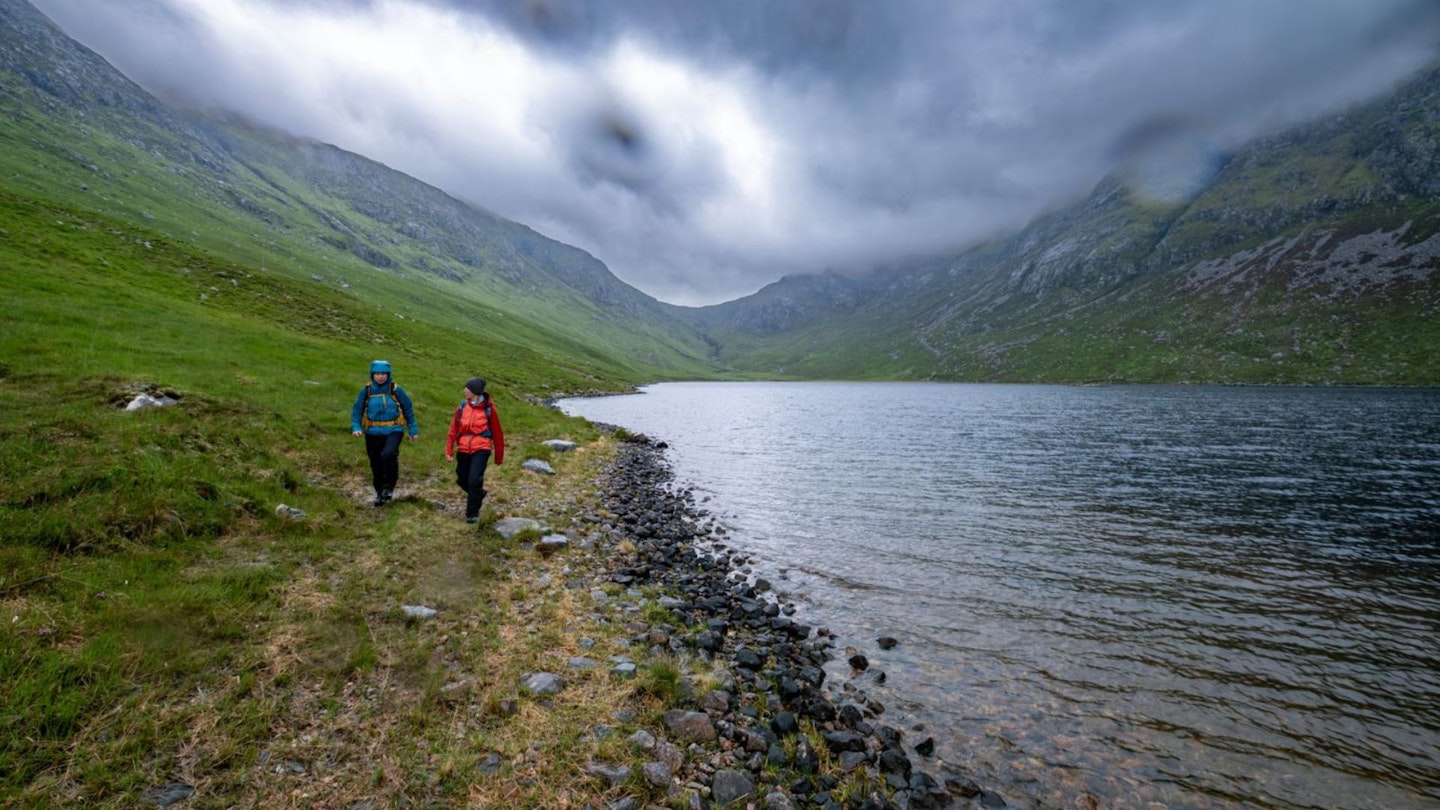
Looking out over Loch Crabhadail into Loch Reasort from the coastline just a little further north, it was, in fact, more like looking out over a Norwegian fjord. The rain-filled clouds only added to the sense of drama. Along the way we spotted wild Orchids, Sundew, Butterwort and Lousewort in bloom, and remnants of the sea were scattered along the shore, from urchin skeletons to lobster remains. A shrew ran over Lou’s shoe, seemingly unaware of any danger.
There were signs of humans too, the odd fishing boat, a remote private bothy, grassy areas of ridges and furrows called ‘lazy beds’, that would have been a traditional method of cultivation at some point. We trekked along the coast, discovering yet more white sandy beaches, and around Loch a’ Ghlinne on a rough path.
The mountains above remained stubbornly in cloud and the rain persisted, but it was good to be out. After a good five hours walking, we returned to camp. Our footprints still the only ones on the beach. Popping up our tents again, we were relieved when the rain finally stopped.
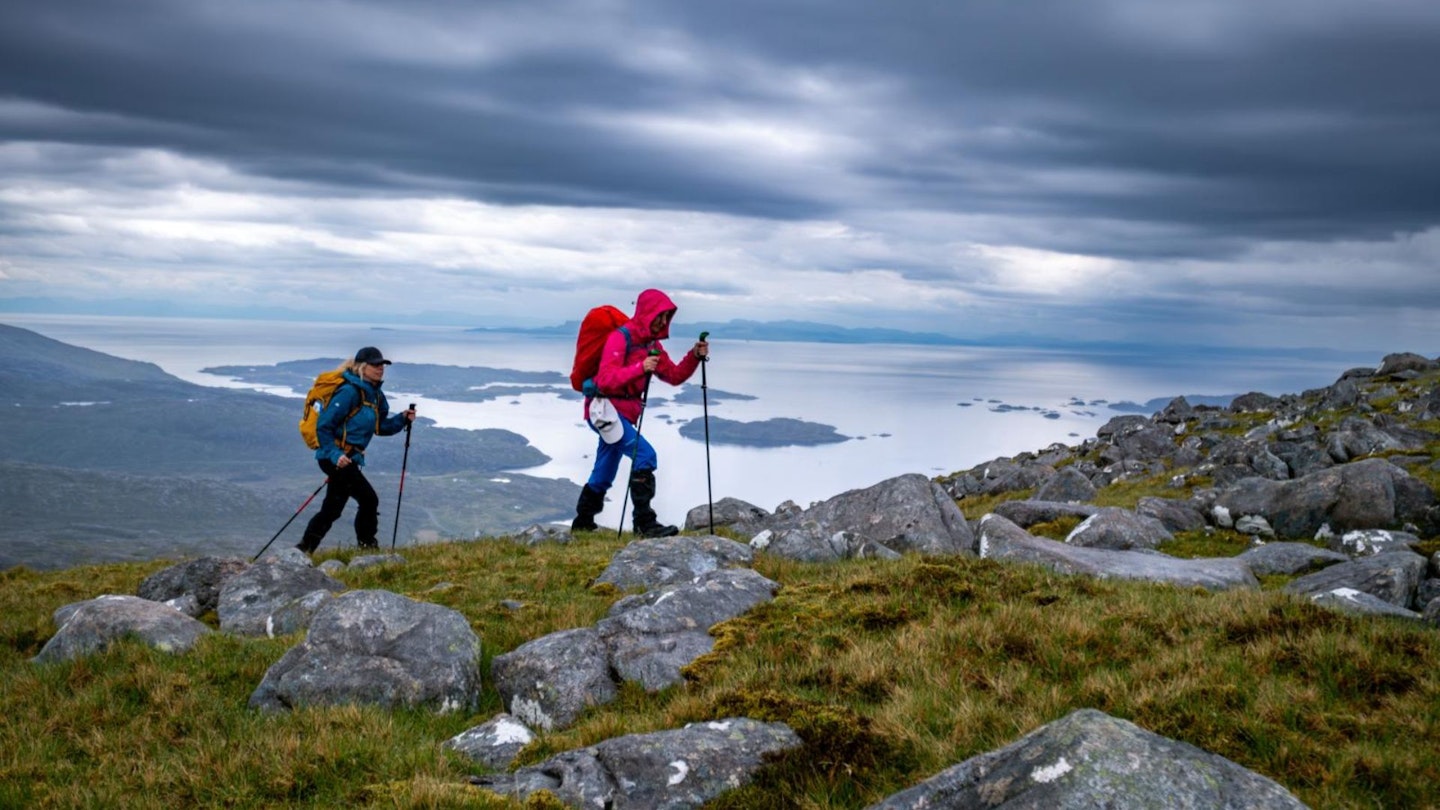
It was a wild last night on the beach. In calm conditions it had been bliss, but in strong winds there was no protection – and my tent barely made it through the night. An inspection in the morning revealed that the only thing stopping the whole tent blowing away had been my body weight inside. Several of the pegs had worked their way loose in the sand, despite the heavy boulders used to anchor them.
The tent had been collapsing down on me in the night, explaining the weird dreams I’d been having of the walls closing in. The weather forecast had deteriorated from being the best day of our trip, to a yellow weather warning for heavy rain and ferocious winds, so we needed to decamp as quickly as possible.

Our plan had been to do the Clisham Horseshoe, an epic day walk over the highest mountain on Harris. Given its reputation for being an exposed ridge scramble and a tough day out even by Scottish standards, that plan seemed doomed. Undeterred, we instead chose the less serious Skeaudale Horseshoe. It was still a decent 9km, five-hour walk on pathless terrain, over multiple summits and over 800m of ascent. It was enough, and we could bail out much more easily than on An Cliseam.
Luckily the other thing we learned about walking on Harris, is you can’t trust the weather forecast. The apocalyptic weather never arrived, instead getting whisked off by the fickle jet stream to bother some other island, and we were amazed to enjoy good views and even the odd ray of sun. As we were coming to expect, there were no paths on the Skeaudale Horseshoe, but with the going fairly good, it was easy to pick our way up onto the route’s first top: Gillaval Dubh, at 417m.

In no time at all expansive views of Loch a Siar had opened up. It’s a wide sea loch that opens out into the Atlantic, cradling the uninhabited island of Taransay where Ben Fogle and a group of 36 men, women and children lived for a year in the BBC’s ‘Castaway 2000’ – kicking off the whole reality TV craze.
What really caught our attention was a huge cone of a mountain that was gradually revealing itself from the clouds. An Cliseam. Harris’s biggest mountain at 799m. Rising from the sea, what Cliseam lacked in height, it more than made up for in character, and we looked on, wondering what could have been.
We’d made a call though, and it was the right one in the circumstances. Ahead the whole Skeaudale round could be seen, circling about a steep and dramatic combe. It was shaping up to be a cracker of a walk already and plenty more lay ahead.
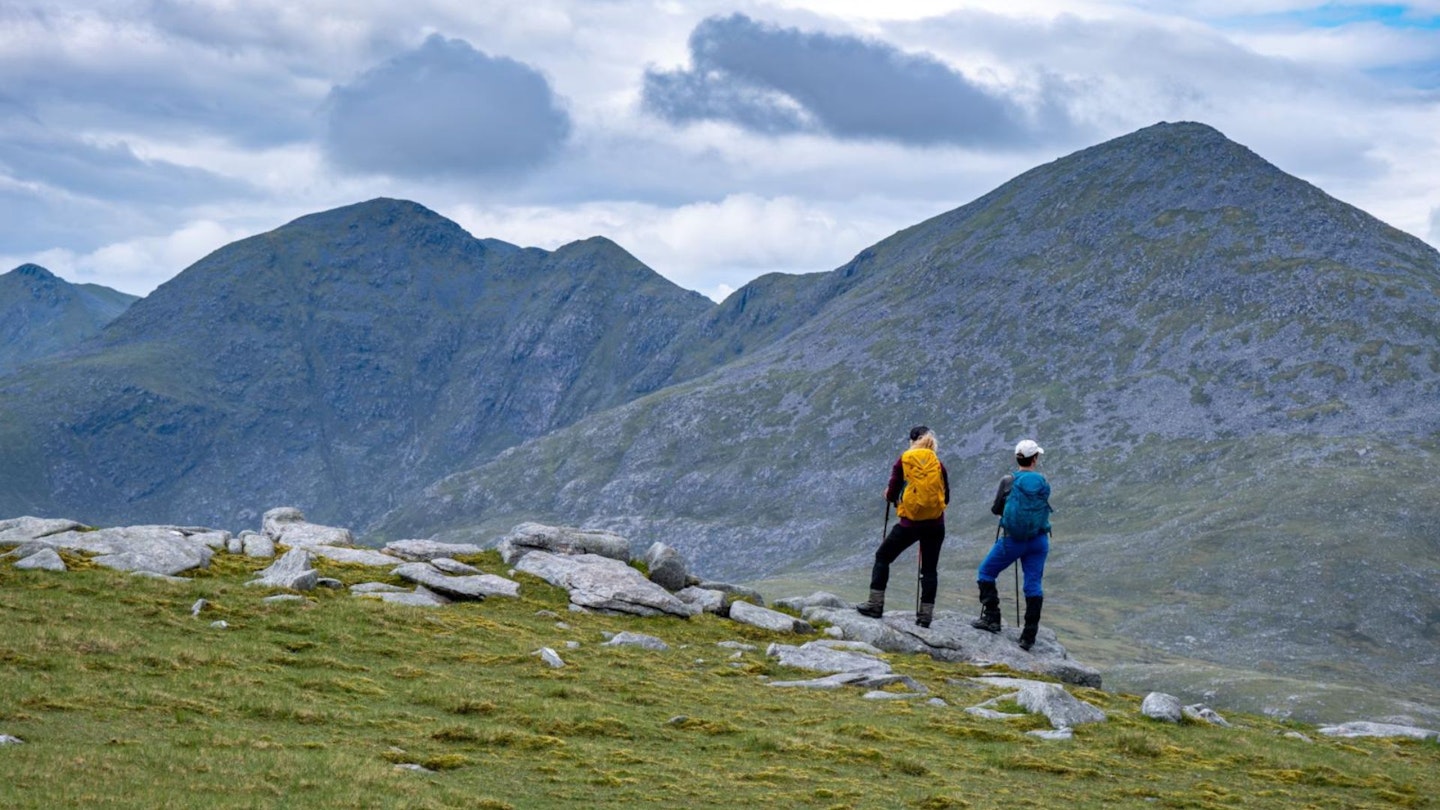
We headed on over the rollercoaster ridge onto a trig point and shelter on Giolabhal Glas. From one sea view to the west, in no time at all we were now looking east over Tarbert town and out over an archipelago of islets to Skye in the far distance, from one side of the island to the other.
The last remnants of my disappointment not to be climbing An Cliseam drifted away towards the sea. Dragging ourselves away from the ocean views, we headed north onto the highpoint on the horseshoe at 559m on Sgaoth Aird, onto the return arm.
“A HUGE CONE OF A MOUNTAIN WAS GRADUALLY REVEALING ITSELF FROM THE CLOUDS. AN CLISEAM.”
Once again, views of Cliseam grew ever more impressive, but the rocky architecture of the horseshoe competed valiantly for our attentions as the north face between Sgaoth Aird and Sgaoth Iosal plunged vertically more than 300m down into a collection of lochs. The gradient was easy over the last top and we strolled along, stopping to say hello to a random frog that nearly lost its life beneath a boot. The descent was a bit of guesswork, but in good visibility we could see where to zig zag around the crags down the steep grassy slopes.
And that was it. Skeaudale bagged. Beach camp complete. Our Harris adventure was done. All that remained was to travel to Stornoway on the Isle of Lewis to catch our ferry back to Ullapool the next day. Lewis is the northern part of the same island as Harris, and going in and out of different ports meant we would experience a little more of the island, as well as views into the Highlands from the ferry.
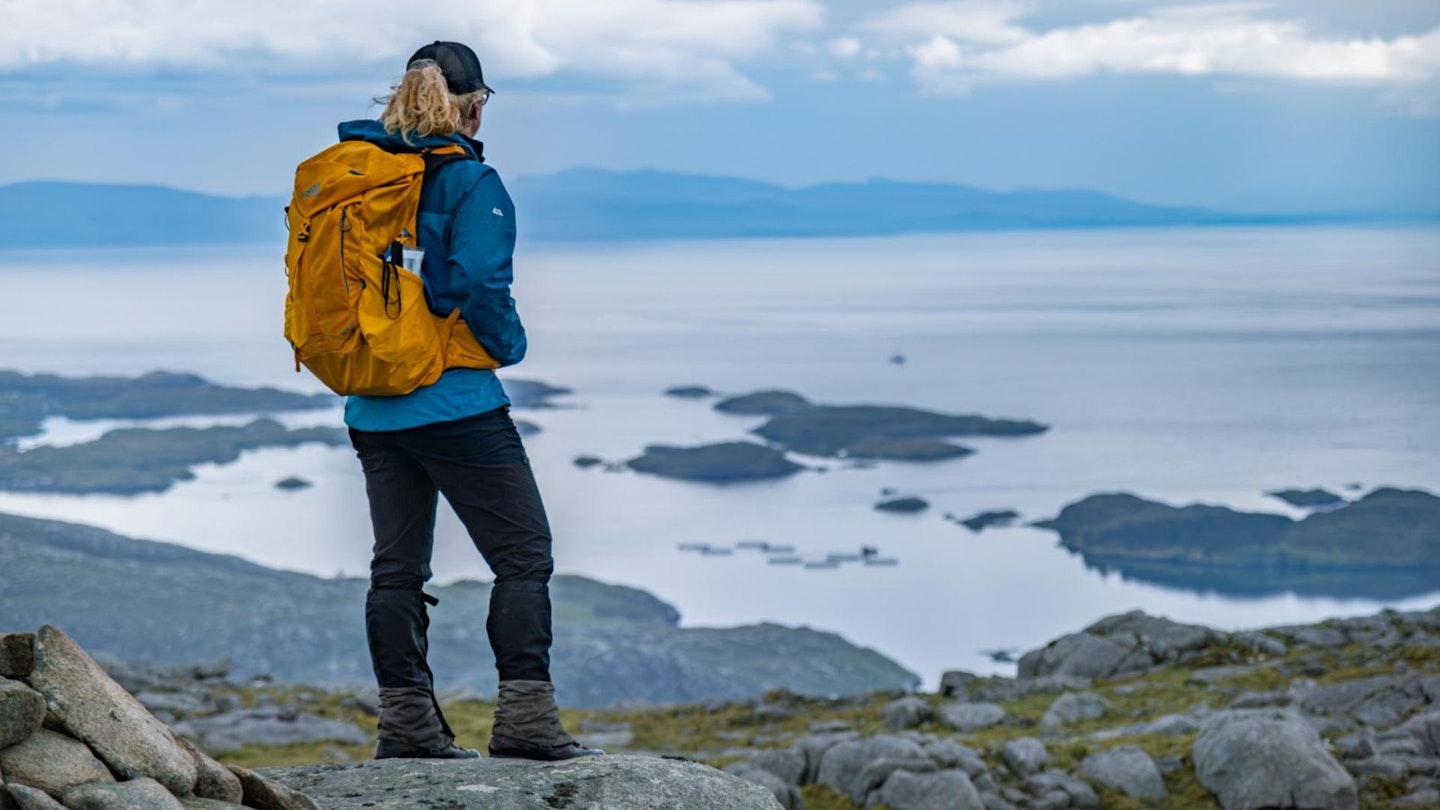
So were the Outer Hebrides as incredible as the pictures promised? The truth is, Harris is every single bit as stunningly beautiful and wild as you imagine. The beaches are as good as any in the Caribbean, maybe better. The mountains are big and brutish with fantastic walking off the beaten track. Wildlife thrives, with bird and sea life like nowhere you’ve seen before. But that’s only half the story.
The reason it’s not spoilt by sprawling seaside towns and high-rise hotels is that to go there takes a bit of grit. The journey is long. The weather is cruel. The midges might attack. You probably will have to change your plans.
But you might also fall in love with a place where your heart feels at home, away from all the madness, at the mercy of Mother Nature. It’s bliss and torture. Gentle and savage. Beautiful and menacing. If you’re willing to surrender to all of that, then you’ll love Harris.
3 great hikes on Harris
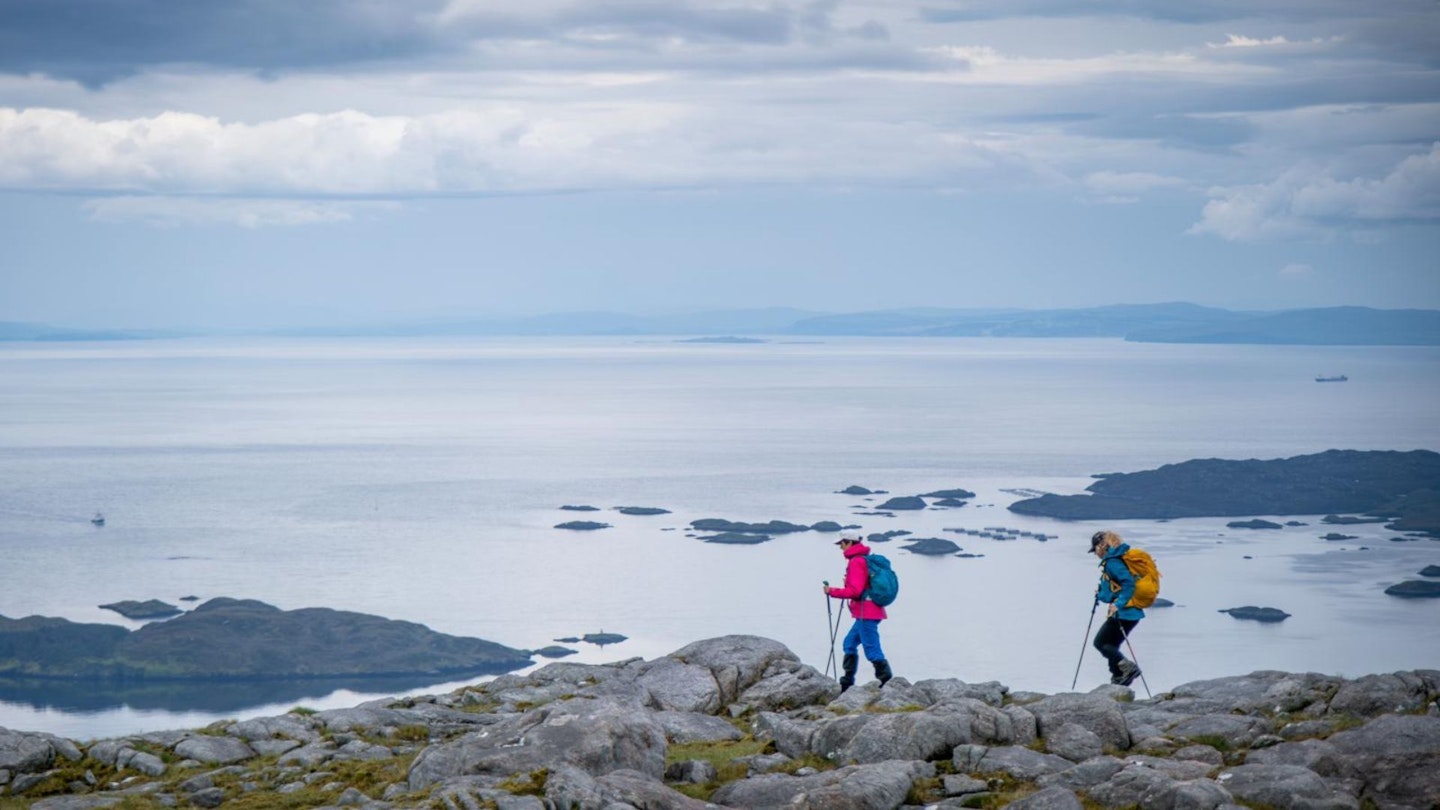
Skeaudale Horseshoe – Hills & Sea Siews
Start/finish: Parking bay at grid reference NB137034
Distance: 9km
Ascent: 826m
Difficulty: Medium
Terrain: Pathless but fairly good walking ground. Mixture of rock and grass. Easy to stay as close or as far away from big cliff drops.
Navigation: pathless terrain, good nav required in poor visibility. Cliff edges, with huge drops

An Cliseam – Rock & Ridge
Start/finish: Parking bay at NB182099 Distance: 14km
Ascent: 1076m
Difficulty: Hard
Terrain: Rough and rocky ridges, potentially very boggy approach and return, some bouldery sections and exposed descent require caution, paths are intermittent and not always obvious.
Navigation: Sketchy paths through often complex terrain make navigational competence a must.
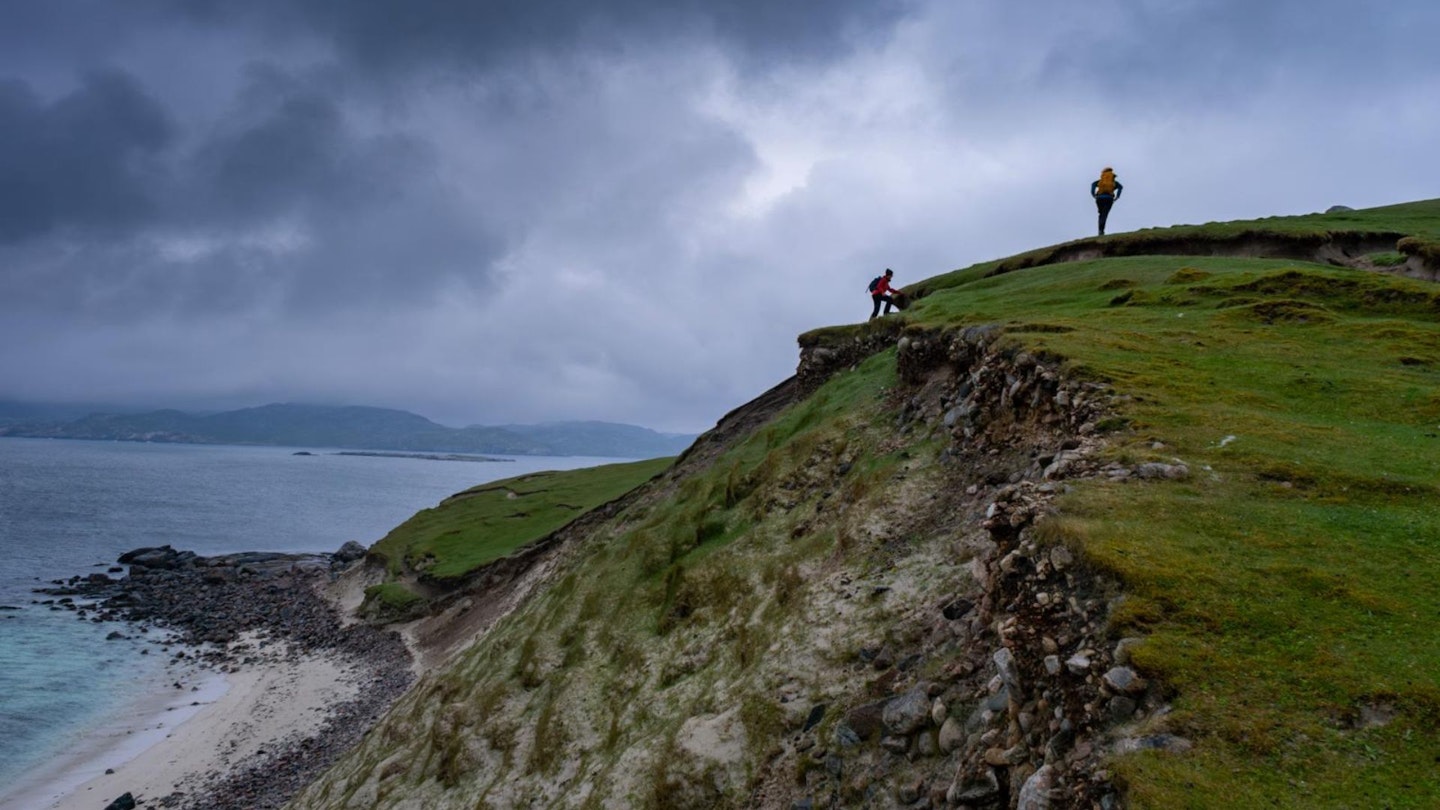
Huisinis Walk – Beaches, Hills & Lochs
Start/finish: Parking Huisinis Gateway where there are campervan facilities, showers etc (£5 for the day, £20 overnight, donation for cars) NA992120
Distance: 15km
Ascent: 825m
Difficulty: Medium
Terrain: The going underfoot is generally good though boggy and rough in places.
Navigation: There are paths on the ground for much of the way, but the usual navigation is required in poor visibility.
How to get to the Isle of Harris
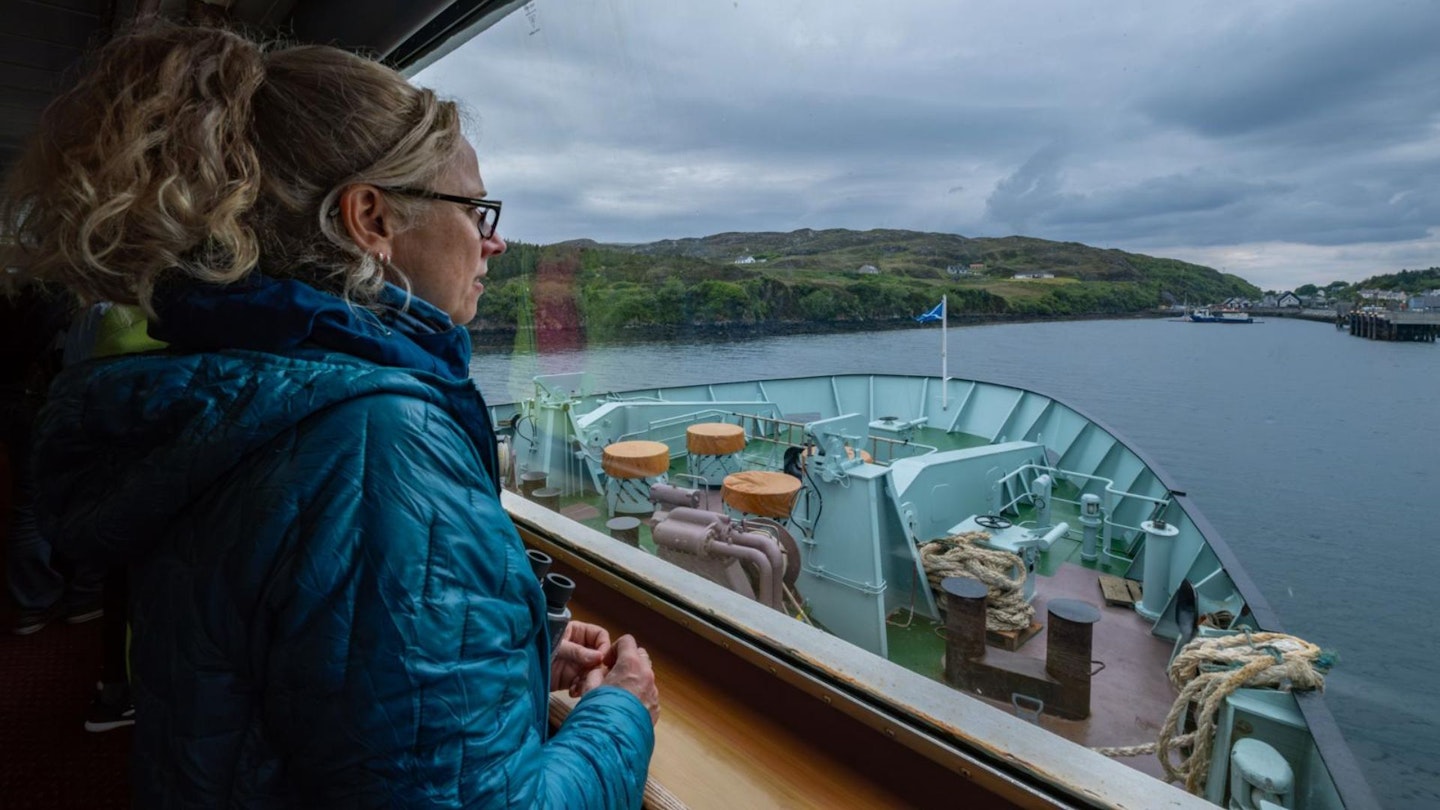
Reasonably priced CalMac ferries for foot passengers and cars sail from Uig on Skye to Tarbert on Harris; or from Ullapool to Stornoway on Lewis. Book your ferry early in peak times. It’s worth checking for last-minute cancellations if you need to.
Beach camping on the Isle of Harris
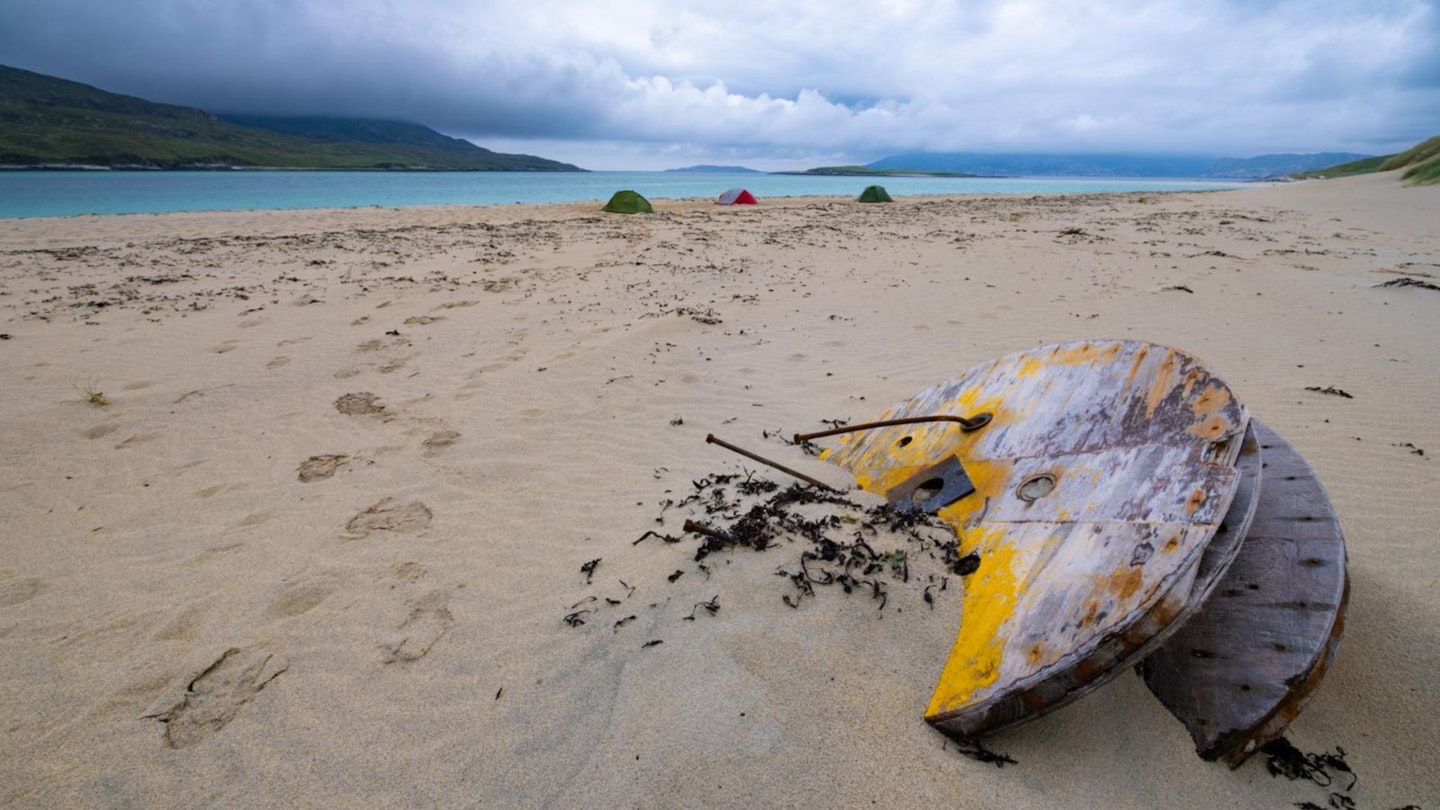
We’ve purposely not named our precise beach camp location, out of respect for the environment. Harris is largely unspoilt by tourism for now, so the burden of visitors is best dispersed by people discovering their own gems. It’s abundant with incredible beaches which you can easily find on a map. There are plenty of campsites or, if you do beach or wild camp, do so responsibly, away from civilisation and leave no trace.
TOP TIP: If camping on sand, secure your pegs well, either with specially designed sand/ snow stakes or using boulders (make sure you put them back where they came from). The Scottish Outdoor Access Code is well worth reading before you go.
Where to stay
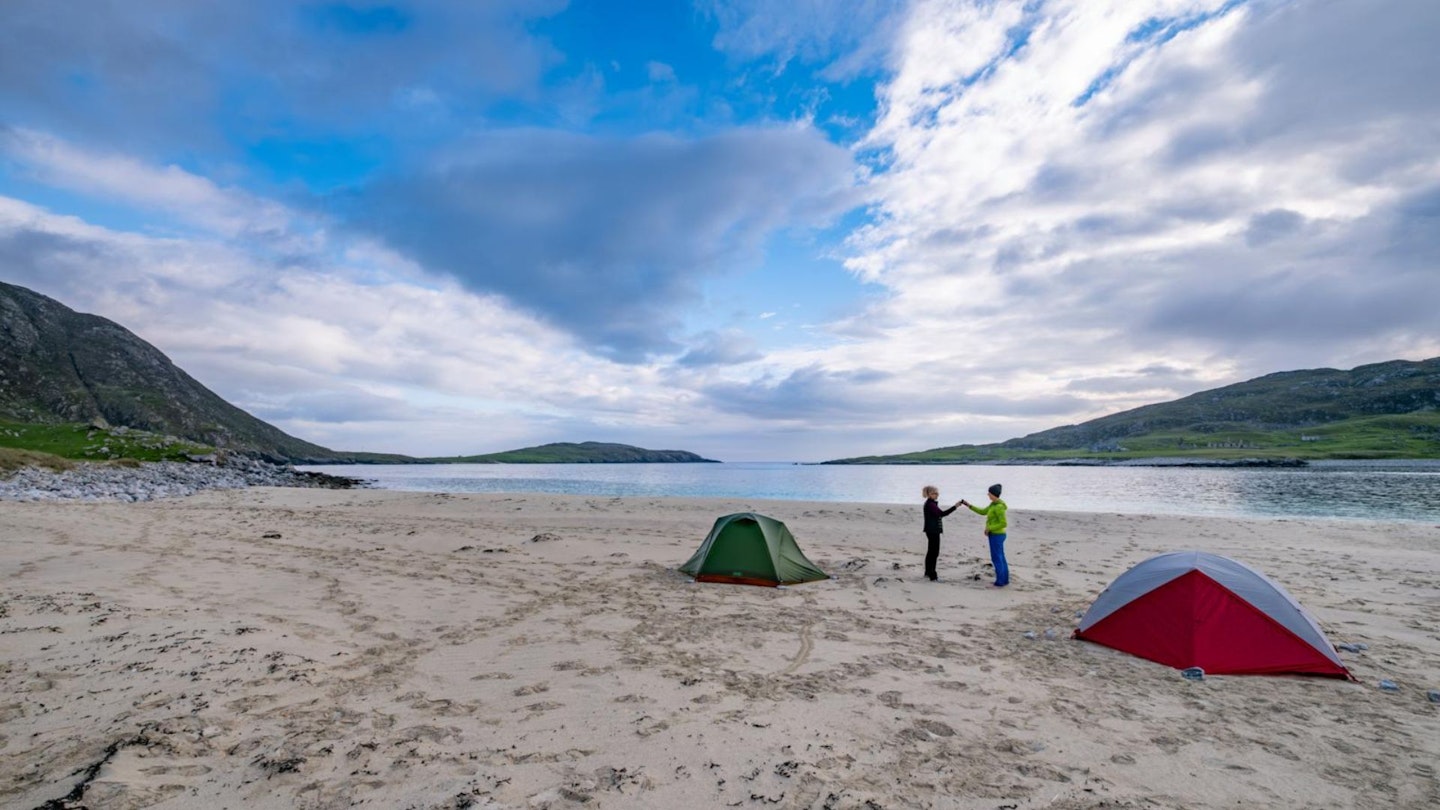
SKYE: Staffin Campsite is about 25min from Uig ferry port. A lovely family-run site near to the Quiraing. They also have cottages to rent. staffincampsite.co.uk
HARRIS: There is lots of accommodation on Harris, but it can get booked up in peak season. There are also numerous campsites. For campervans Huisinis Gateway offers facilities, showers, 24-hour toilet etc (£5 for the day, £20 overnight, donation for cars). north-harris.org/huisinis-gateway
LEWIS: Laxdale Holiday Park is a 5-minute drive from the Stornoway Ferry Port, with a range of camping, small 4-bed bunk rooms, wigwams or lodges. The HS1 at the Royal Hotel is also recommended for food if you head into Stornoway town. laxdaleholidaypark.com
About the author
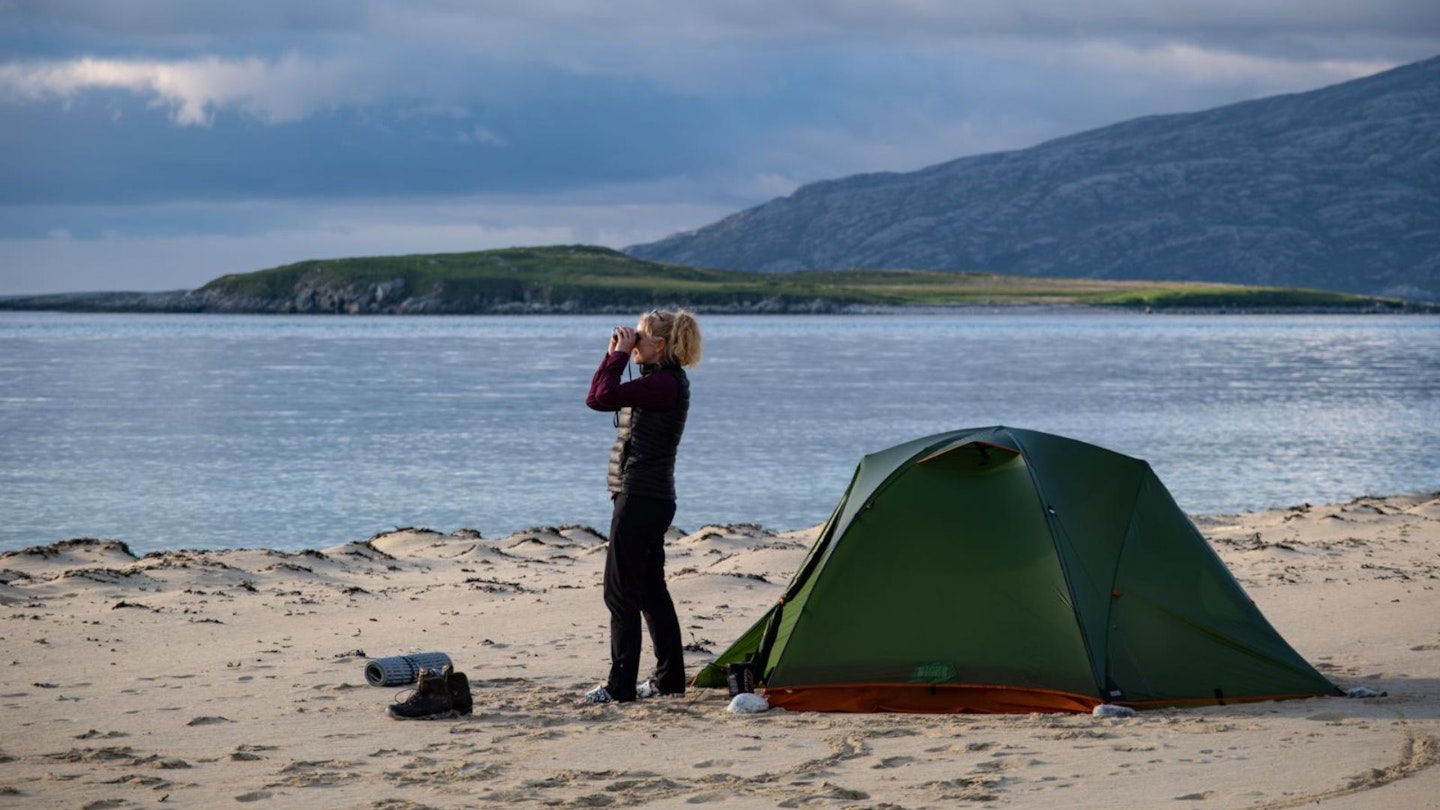
Jenna Maryniak is a lifelong hiker, camper, wild camper and former Trail magazine deputy editor who's explored almost every inch of the UK on foot. Visiting Harris had been on her bucket list for a long time – and this trip definitely didn't disappoint.
